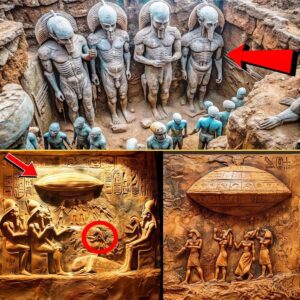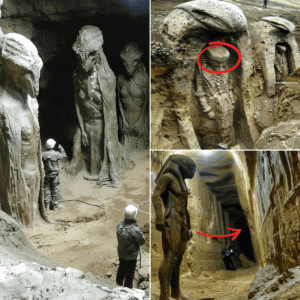
“After the coffin was unearthed, experts on-site refrained from an immediate opening (see illustration).
The emergence of ancient artifacts and tombs in contemporary China has become a familiar theme in the field of archaeology. Often, restoration activities in the country serve as the primary catalyst for such discoveries. More than a decade ago, during a major restoration of the renowned Long Tuyen Pagoda in Son Tay, construction workers accidentally stumbled upon a mysterious ancient tomb.
Upon receiving the news, Son Tay archaeological experts swiftly arrived at the site to rescue the ancient tomb. As they commenced their exploration, a remarkable feature became apparent – this ancient tomb deviated significantly from the norm. It contained an impressive five layers of coffins, each crafted from different materials: stone, wood, bronze, silver, and gold. Among them, the golden coffin garnered considerable attention from all observers.”
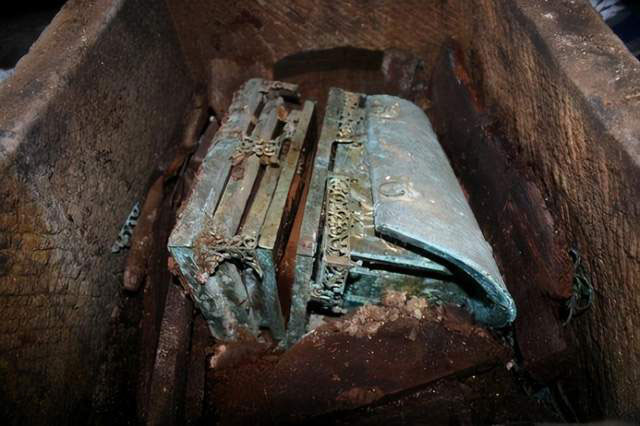
This coffin is made entirely of real gold, its upper part is also carved with many delicate patterns.
According to experts, this coffin is made entirely of real gold , and its upper part is also carved with many delicate patterns. After consulting relevant historical documents, experts believe that this golden coffin must have a certain connection with religious culture.
Although the ancients attached great importance to funerals, a coffin cast entirely in gold is still extremely rare. After all, in ancient society, the person who could buy a coffin made of pure gold must have been a rich person or had a superior family background. Experts also predict that many valuable historical and cultural relics will definitely be found in this tomb.
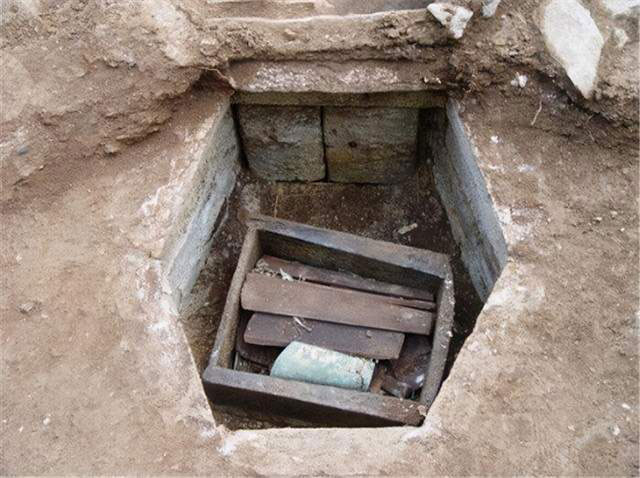
In many previous archaeological excavations, some cultural relics were seriously damaged due to oxidation.
Faced with that situation, many experts hope to discover the mystery of the owner of the tomb by opening the golden coffin. However, when experts brought the golden coffin back to the laboratory and tested the opening of the coffin, they discovered that to open the golden coffin, they must first remove the special red silk bow tied on the coffin. golden wealth.
After inspection, it was discovered that the date of this golden coffin fell around the Tang Dynasty. The Tang Dynasty has a history of thousands of years, which means that if the red silk strip on the golden coffin were to come off, oxidation would be inevitable. Thus, the red silk on the golden coffin will also lose its original precious historical value.
In fact, in the archaeological process, oxidation is a very common phenomenon. After all, the cultural relics excavated from ancient tombs all have a history of hundreds of thousands of years, because the long-term deep underground environment also makes it difficult for them to immediately adapt to the light and air conditions above. ground.
In many previous archaeological excavations, some cultural relics were seriously damaged due to oxidation . For the development of Chinese historical research, these oxidized cultural relics also make experts very regretful.
Gradually, with the development of the times, experts have also realized the importance of protecting cultural relics. Nowadays, if it is not absolutely necessary, experts will not open ancient tombs and excavate cultural relics therein. This shows that with the continuous development of the new era, the importance of protecting human artifacts is also constantly increasing.
Faced with that situation, experts were forced to give up their desire to open the golden coffin. During the past 10 years, they also hoped to be able to discover the mystery inside the golden coffin with the help of special techniques. Although up to now, experts have not been able to find a reasonable way to open the golden coffin, everyone understands the root cause of this problem.
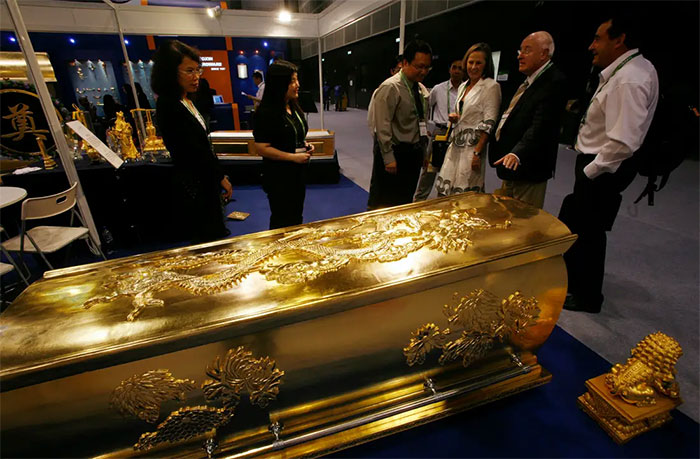
Up to now, experts have not been able to find a reasonable way to open the golden coffin.
Archaeologists still hope that with the continuous development of science and technology, they will be able to find the secret inside the coffin one day. Until that time, the question of what was inside the coffin remained unanswered.
Previously, after preliminary analysis of this golden coffin, they could see that its value was very high, so if the conditions were not yet ripe to excavate it, this would be an act of destruction. history.
From some previous archaeological activities, we can see that if cultural relics are not well preserved after excavation, they will also lose their original value due to many different reasons.
However, archaeologists still hope that with the continuous development of science and technology, they will be able to find the secret inside the coffin one day. Until that time, the question of what was inside the coffin remained unanswered.




